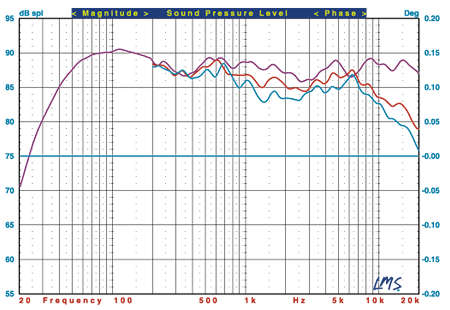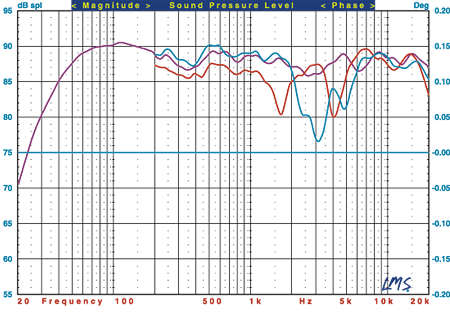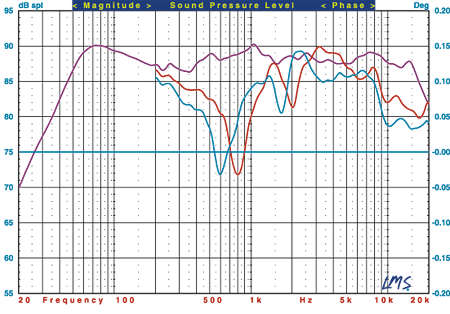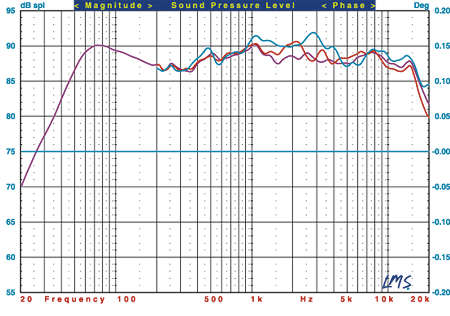DALI Euphonia surround speaker system Measurements
All measurements cited were taken with the speakers' grilles removed.
The DALI Euphonia MS 4's bass ports are tuned to approximately 31Hz. Its impedance magnitude is a minimum of 4ohms at 154Hz, and remains within a narrow range across most of the range above the lowest frequencies. I would rate its nominal impedance at 5ohms. It should be a relatively easy load for any amplifier capable of driving 4ohms without complaint. The MS 4's sensitivity measured 88dB/W/m across most of the frequency range.
The front response of the MS 4 is shown in Fig.1 (violet). This is the pseudo-anechoic response averaged across a 30° forward angle in the horizontal plane at tweeter height, combined with the nearfield responses of the woofers and port. The speaker's measured effective lower response limit (–10dB) was 30Hz relative to its output at 100Hz.

Fig. 1
The averaged response is very smooth. A slightly recessed trend in the presence region suggests a modestly laid-back quality, but the overall curve still falls within +/-2dB from 50Hz to 20kHz. The wide off-axis response tracks the on-axis averaged response reasonably well, apart from a gentle rolloff at the highest frequencies. The vertical responses in Fig.2 are less well controlled, with some obvious irregularities in the upper midrange and low treble. Listen to this speaker sitting as close to the tweeter height as you can.

Fig. 2
The Euphonia CS 4 center speaker's ported cabinet is tuned to approximately 30Hz, and its impedance magnitude dips to a minimum of 4.1ohms between 137 and 192Hz. As with the MS 4, the CS 4's impedance magnitude is incredibly flat above the bass tuning range, staying within 4–6ohms from 80Hz to 20kHz! The CS 4's nominal impedance appears to be about 5ohms; like the MS 4, any capable amplifier should be able to drive it. The CS 4's sensitivity was also very nearly the same as the MS 4's: about 88dB/W/m.
The horizontal front response of the CS 4, derived and averaged as described for the MS 4, is shown in Fig.3 (violet). The speaker's effective lower limit (–10dB) is 35Hz relative to its output at 75Hz. The on-axis response is relatively smooth, a broad dip centered at about 300Hz being the most significant deviation. The far off-axis response, however, exhibits the sort of dips we normally see in horizontal center-channel speakers that use two woofers to cover the same range—odd, since one woofer is claimed to roll off above the bass end (though the rolloff point is not specified). SS did not report any audible effects from this dip, which will show up for listeners seated well off-axis. The vertical responses in Fig.4 are much smoother than those of the MS 4 in Fig.2.

Fig. 3

Fig. 4
Altogether, this is a respectable set of measurements. The listening results clearly were not compromised by the few aberrations noted.—Thomas J. Norton





























































